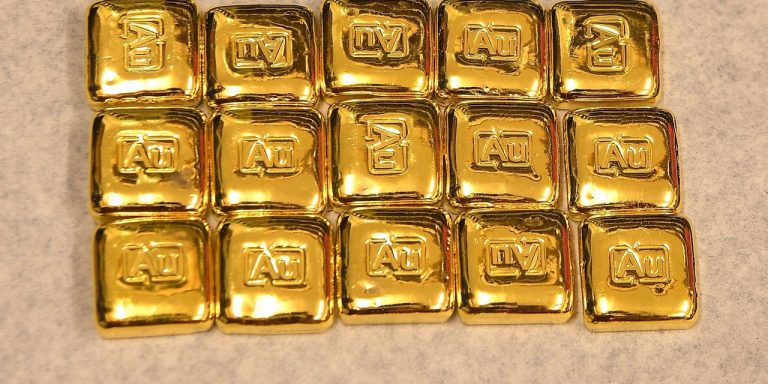Gold futures settled modestly lower on Friday, notching their worst weekly performance since late June, weighed down by a strong dollar and rising Treasury yields as investors assessed the latest batch of U.S. inflation reports and consumer sentiment for more clues about the Federal Reserve’s next move on interest rates.
Price action
-
Gold futures for December delivery
GC00,
-0.11% GCZ23,
-0.11%
lost $2.30, or 0.1%, to settle at $1,946.60 per ounce on Comex, with prices down nearly 1.5% for the week. That was the yellow metal’s largest weekly decline since the week ending June 23, according to Dow Jones Market Data. -
Silver futures for September delivery
SI00,
-0.45% SIU23,
-0.45%
fell by 8 cents, or 0.3%, to end at $22.74 per ounce, posting a weekly decline of 4.1%. -
Palladium futures for September delivery
PA00,
-0.62% PAU23,
-0.62%
rose $3.60, or 0.3%, to finish at $1,309.10 per ounce, advancing 3.5% this week. Platinum futures
PL00,
-0.35% PLV23,
-0.35%
for October delivery was off 20 cents, leaving it nearly flat at $914.60 per ounce. It booked a weekly decline of 1.5%, according to Dow Jones Market Data. -
Copper futures for September delivery
HGU23,
-0.70%
fell by 5 cents, or 1.2%, to settle at $3.72 per pound. The industrial metal was down 3.8% week to date, booking its worst weekly drop since May 12, according to Dow Jones Market Data.
Market drivers
Prices of the yellow metal have fallen this week despite Thursday’s cooler-than-expected U.S. inflation report as worries about a potential reacceleration of inflationary pressures, along with concerns that Treasury yields and the U.S. dollar might continue to climb, have dimmed demand for the precious metal.
The U.S. dollar index
DXY,
a gauge of the greenback’s strength against major currencies, advanced 0.3%, to 102.85. The yield on the 10-year Treasury note
BX:TMUBMUSD10Y
rose 6 basis points at 4.162% from 4.141% on Thursday afternoon when San Francisco Fed President Mary Daly said the Fed had more work to do to tame inflation despite the latest data which showed consumer prices rose just 0.2% in July.
Another inflation report released Friday further complicated the picture. The U.S. producer-price index rose 0.3% in July, the Labor Department said on Friday, up from a revised flat reading in June and the largest gain since January. The core producer price index, which excludes prices of volatile food, energy and trade services, rose 0.2 in July, up from a 0.1% advance in the prior month.
See: ‘Good inflation’ may come back later this year, some strategists say
The University of Michigan’s gauge of consumer sentiment inched down to a preliminary August reading of 71.2 after hitting a 22-month high of 71.6 in the prior month. Economists polled by the Wall Street Journal had expected sentiment to inch up to a 71.7 reading in August.
“Gold is continuing its slow slide toward $1,900 an ounce as doubts remain as to whether the Federal Reserve still has one more interest rate increase left in its current cycle, even following yesterday’s encouraging U.S. inflation data,” said Rupert Rowling, a market analyst at Kinesis Money, in emailed commentary.
Mark L. Newton, head of technical strategy at Fundstrat Global Advisors, said gold has finally given a downside exhaustion signal, which “should be bullish.”
“Given that both U.S. dollar and U.S. Treasury yields are in the process of peaking out in the short run, precious metals are likely to prosper in their seasonally bullish period over the next couple of months,” Newton said in a Thursday note.
Read the full article here









